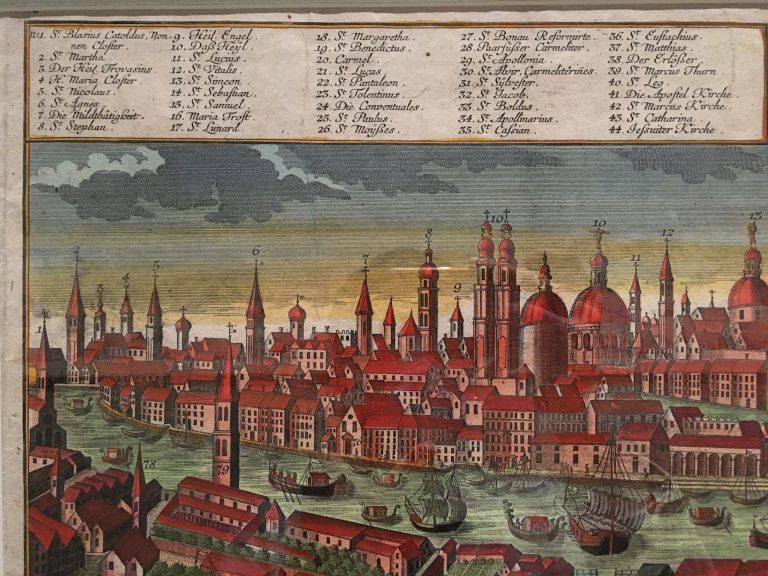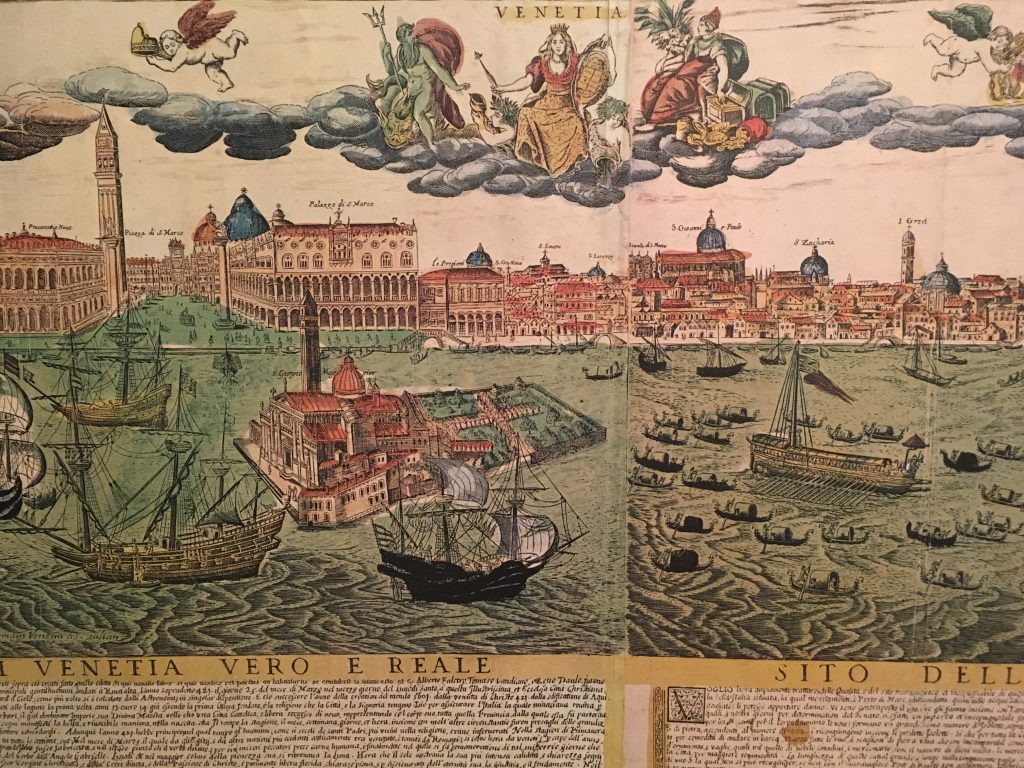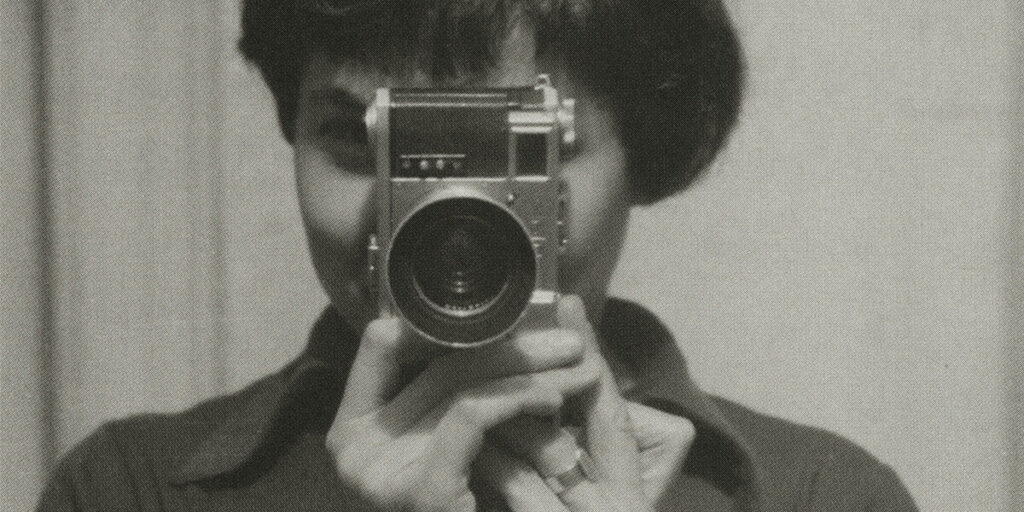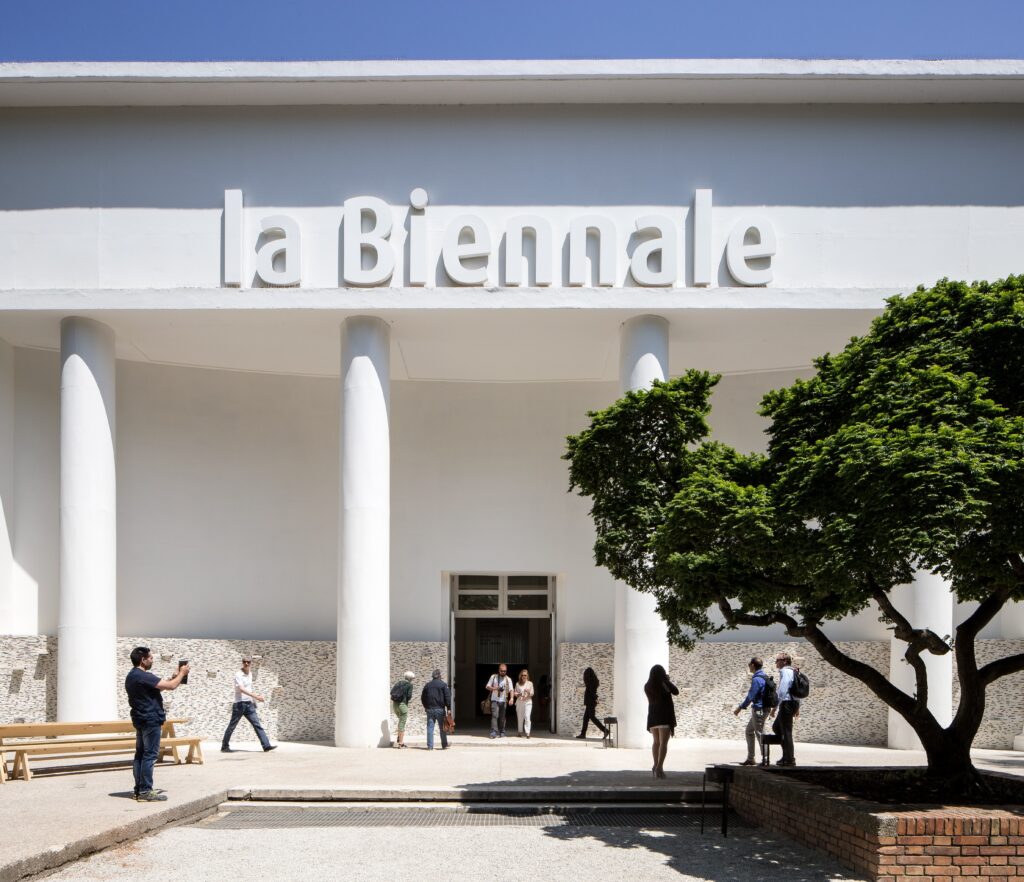And for a moment returns the will to live at a different speed
In Campo Santa Maria Formosa in Venice, at the third floor of the Querini Stampalia Foundation’s Museum, “Panoramic Venice: the discovery of the infinite horizon” has just been inaugurated.
The exhibition, curated by Pascaline Vatin and Giandomenico Romanelli, is composed by images of the city dating from the Renaissance to the current days and shows how the variations in its representation through the centuries have been led by the evolution in perspective and optical sciences as well as by developments in the print techniques
The depictions we see in the exhibition are not maps nor the famous Canaletto’s views to which everyone associates the image of Venice in the History of art, but something of these two genres can be found in most of the prints that are displayed (for example, the toponymy and the forcing of perspective or the unlikely architectural combinations), so that during the visit similarities surface in our minds, and we find ourselves wondering where we could have seen landscapes like these before: in one of the Canaletto’s at the National Gallery? In a movie? On the way to the museum? Did we really see that?

The great Panorama di Venezia by Giovanni Biasin, painted in 1887 and here shown for the first time after the restoration, is the main piece of the exhibition. To this huge painting on paper (22 meters) is reserved a whole room: it feels like being immersed in a bright morning in the St. Mark’s Basin of the XIX sec, between fishers, landscape painters, traders and boatmen, while standing on a boat in the middle of the lagoon. This view is surreal, if compared with the current days, characterized by the traffic of taxi-boats, ferries and motorboats that keep coming and going.
Maybe who lived in the city in the last year can say that they recognize something real in this panorama, but Franco Battiato how used to sing in The season of Love:
“lost horizons are never forgotten”.
What takes shapes on the walls of four exhibition rooms, painted in green lagoon, is not only a landscape of the city and of its evolutions, but also of the ways in which it has been perceived and imagined throughout time. This exhibition encourages us to observe, to dive in the images looking for places we know, only for us to realize how much they changed during the centuries, to pay attention to the details and try and identify the dozens of churches of the city – and their squares – that we heard mentioned around us while we hang around in the streets: the Basilica of Redentore turns up during the XVI century, not long after San Giorgio’s church (often represented ‘crooked’ in order to show the Palladian facade), at the end of the XVII century the Basilica of Saint Mary of Health pops up, while San Gregorio’s church seems to be getting smaller…

Personally, I felt this exhibition as an encouragement to slow down, to change my pace and perspective, leaving all those paths, typically touristic, that are so crowded in the frenetic ‘trips to Venice’, in order to actually become aware of the unique shape of this city and to create an idea of it that is strictly ours, and possibly to fall in love with it: what better way to celebrate Venice’s 1600th birthday?
Open from Tuesday to Sunday, until 12 September 2021.




